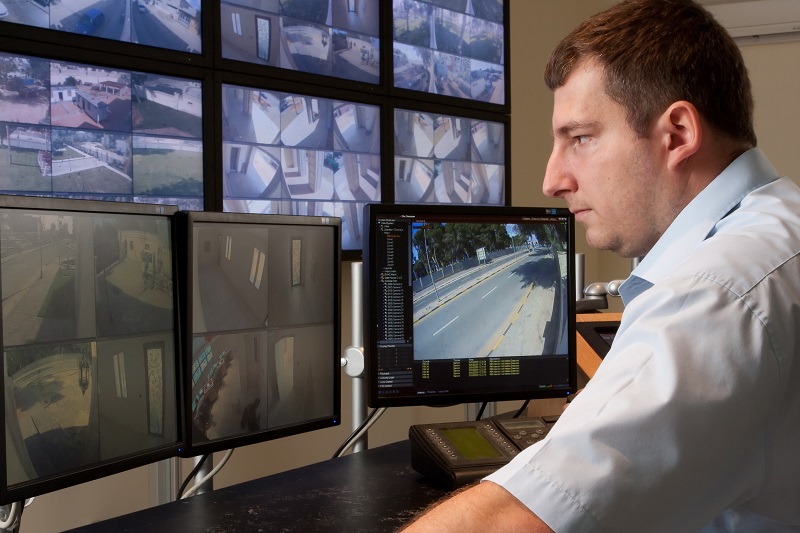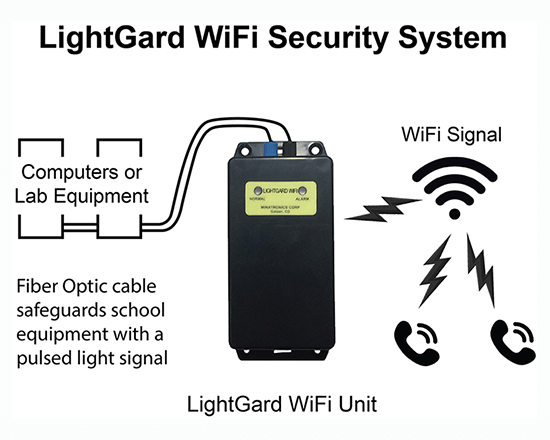How Fiber Security Helps Prevent Unauthorized Access and Boosts Surveillance
How Fiber Security Helps Prevent Unauthorized Access and Boosts Surveillance
Blog Article
Why Fiber Optic Safety And Security Systems Are the Future of Security
The transition to fiber optic security systems marks a considerable development in the world of protection, driven by their outstanding information transmission capacities and durability to outside disturbances. As the landscape of protection evolves along with arising innovations such as AI and IoT, the capacity for fiber optics to boost and redefine safety and security frameworks ends up being increasingly evident.
Benefits of Fiber Optic Solutions
One of the main benefits of fiber optic systems is their superior bandwidth capability, which facilitates the transmission of large volumes of data over fars away without significant loss. This characteristic is especially beneficial for security applications that call for the continuous surveillance and transfer of high-def video clip feeds, sensor information, and various other important info. Optical fiber can suit the growing demands of contemporary protection systems, making sure that data continues to be undamaged and reputable.
Furthermore, fiber optic cable televisions are much less prone to electro-magnetic disturbance, which can be a substantial concern in environments with numerous electronic devices. This resistance enhances the integrity of the information being transmitted, consequently reducing the threat of information breaches or system failings. Fiber optic systems are naturally more protected than standard copper cords, as tapping into a fiber optic line without discovery is extremely challenging.
The toughness of fiber optic cords additionally adds to their charm. They are resistant to ecological aspects such as moisture and temperature variations, minimizing upkeep costs and enhancing system long life. On the whole, these benefits position fiber optic systems as a robust and reliable option for contemporary safety and security facilities, guaranteeing reliable and safe data transmission.
Enhanced Information Transmission Speed

The capacity to transmit vast amounts of data rapidly promotes the smooth combination of high-def video feeds and progressed analytics. Security systems can now process and analyze info in real-time, improving feedback times and situational recognition. Additionally, fiber optic connections sustain longer transmission ranges without destruction of signal high quality, making them optimal for expansive safety networks.
The raised rate of fiber optic systems not only enhances the efficiency of security operations yet also minimizes latency. This is specifically vital in crucial situations where timely decision-making can stop protection violations or alleviate potential dangers. As companies proceed to prioritize safety and security and performance, the demand for quick and trustworthy information transmission will definitely solidify fiber optic systems as a keystone of modern security framework.
Resistance to Interference
Fiber optic safety and security systems regularly show exceptional resistance to electro-magnetic disturbance, an important advantage in environments vulnerable to digital sound. Unlike traditional copper cable televisions, which can be negatively affected by magnetic fields, radio frequency disturbance, and various other types of electric disturbance, fiber optic check my blog cords make use of light to transmit data. This inherent home makes certain that the signals stay clear and unaltered, regardless of surrounding digital activity.
The use of glass or plastic fibers in fiber optic innovation creates an obstacle against disturbance, allowing for dependable data transmission even in challenging scenarios such as industrial facilities, urban areas with high electronic traffic, or locations near radio towers. This characteristic considerably minimizes the probability of signal degradation or loss, making fiber optic systems particularly appropriate for protection applications where stability and accuracy of data are paramount.
Moreover, this resistance to interference improves the total efficiency and reliability of safety systems, guaranteeing that tracking and alert systems operate seamlessly. In a globe where protection is progressively intimidated by innovative innovations, the resilience of fiber optic systems stands apart as a critical attribute, reinforcing their condition as a crucial component of modern-day safety framework.
Cost-Effectiveness Gradually
Significant expense savings can be attained gradually with the implementation of fiber optic protection systems. While the first investment may seem higher contrasted to typical copper-based systems, the lasting financial benefits emerge via decreased operational and maintenance costs (fiber security). Fiber optic cable televisions are naturally extra long lasting and less vulnerable to environmental elements, which equates to lower check here replacement and fixing costs over their life-span
Moreover, fiber optic systems require much less power to operate, which additionally lowers power prices. Improved data transmission capacities enable fewer repeaters and amplifiers, decreasing devices investment and streamlining setup processes. The scalability of these systems also adds to cost-effectiveness, as companies can broaden their protection infrastructure without sustaining significant additional costs.
Another aspect to consider is the increased performance in surveillance and feedback capabilities that fiber optics provide. Improved real-time data transmission can cause quicker incident response times, potentially mitigating losses and obligations associated with safety and security violations. In amount, the long-lasting benefits of fiber optic protection systems not only justify the initial expense however likewise place them as an economically sensible choice for companies seeking robust security options.

Future Advancements in Safety And Security
Advancing technologies are set to transform safety and security systems, incorporating expert system (AI) and device knowing to boost threat detection and reaction capabilities. These developments will allow safety systems to evaluate vast quantities of information in real-time, identifying patterns and anomalies that show prospective hazards. This aggressive technique will enable quicker decision-making and much more effective event reactions.
In addition, the incorporation of the Internet of Points (IoT) is leading the way for interconnected safety gadgets, offering thorough monitoring and surveillance. Smart sensors can relay information regarding environmental adjustments, while automated notifies can notify safety and security personnel promptly of dubious activities.
Additionally, the evolution of biometric innovations will even more boost safety systems. Facial acknowledgment, finger print scanning, and retina identification are ending up being more sophisticated, giving layers of authentication that are hard to bypass.
Verdict
To conclude, fiber optic safety systems stand for a considerable advancement in security technology, using unrivaled information transmission speed, resistance to electro-magnetic disturbance, and lasting cost-effectiveness. As the need for advanced security services continues to grow, the assimilation of fiber optics with emerging innovations such as AI, IoT, and biometrics will certainly better improve security frameworks (fiber security). The combination of these developments will certainly make sure an extra safe and receptive setting, try this site strengthening fiber optics as a keystone of future safety and security systems
Report this page